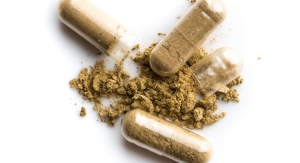Sean Moloughney, Editor09.02.13
Poor eating habits, stress, lack of sleep, sun exposure and other lifestyle factors can accelerate the natural aging process.
Harmful compounds that attack organs and healthy tissue, known as advanced glycation end-products (AGEs), result from chemical processes in the human body that are brought on by poor lifestyle habits. AGEs form when a sugar molecule and a protein peptide bind together. They can develop from consumption of sugary, processed foods or foods that have been browned. While the body needs sugars and proteins to fuel normal functions, excess sugar in the blood results in higher than normal AGE levels.
AGEs are emerging as medical markers for the aging of internal organs, tissues and body systems, according to the AGE Foundation, a non-profit organization focused on generating awareness. Linked to many age-related health concerns, AGEs can be measured by a reader that scans levels using an LED light.
“Science now shows that AGEs accumulate when foods are cooked at very high temperature and the whole browning process really accelerates AGEs,” noted Pat Baird, RD, nutrition/health consultant and author. “Cooking methods like steaming, poaching, boiling and slow cookers are a good way to reduce AGEs. Slow cookers are very popular right now. This is the ideal time to change some of the methods of cooking.”
Lifestyle modifications for preventing AGE accumulation and reducing inflammation include regular exercise. “Specifically, exercise burns excess sugar in the blood before it can become harmful,” Ms. Baird added. “We know that people who are highly stressed have higher levels of inflammation. It’s the same thing with sleep; people who are sleep deprived (i.e., getting less than 7 hours of sleep per night) tend to be overweight, are more likely to have heart disease and have higher levels of inflammation.”
The Iridoid Solution
Research indicates a specific class of phytochemicals known as iridoids, which fall under the larger subcategory of terpenoids, can help defend against AGEs. The two major types of iridoids include deacetylasperulosidic acid (DAA) and asperulosidic acid (AA).
According to Brett West, director of research at Utah-based Morinda Inc., human clinical trials involving heavy smokers have confirmed that iridoids discovered in noni fruit offer protective effects against DNA damage in white blood cells. Morinda’s Tahitian Noni Juice was compared with placebo in the clinical trials.
Morinda citrifolia, commonly known as noni, is a tropical tree that grows on the islands of the South Pacific, Southeast Asia, Central America, the Indian subcontinent and in the Caribbean. The fruit and leaves have a history of use both as food and for the promotion of health. With a well-established safety profile, noni has received Novel Food approval in Europe.
“In looking for other sources of iridoids, we found they’re not very common to fruits,” noted Mr. West, adding that Cornelian cherries found in Asia (Cornus officinalis) and Europe (Cornus mas) also contain iridoids. “We reviewed some research done in Japan on diabetic rats where iridoids from the Cornelian cherries lowered blood sugar levels and also lowered AGE levels in the kidneys of these animals.”
Cranberries, blueberries (Vaccinium) and olive leaf (Olea europaea) offer additional sources of iridoids, though in smaller concentrations than noni. Formulated to feature these iridoid sources, TruAge Max, developed by Morinda, is a dietary supplement shown to lower AGE levels. In a recent study, diabetic participants who consumed 60 mL per day lowered AGEs by up to 24%, according to the company.
Researchers have uncovered multiple ways in which TruAge Max helps control AGEs, including preventing the formation of AGEs by helping to metabolize protein and fat before they can bind and become AGEs, stabilizing blood sugar levels and reducing levels of free radicals in the body. A clinical study among adults found the iridoids in TruAge Max reduced free radicals in participants by 19%.
AGEs & Free Radicals
While AGEs and free radicals have “similar personality attributes,” according to Mr. West, they are distinct. “They are both reactive,” he noted. “They like to react with other things, and they do that very rapidly. A free radical is an issue of an unpaired electron that’s looking for a partner. One of the properties of AGEs involves dicarbonyls—these bonds that are highly reactive. So the mechanism of action is different.”
The formation of free radicals is much more rapid than AGEs that develop from elevated sugars, he added.
“If you started at the beginning of the reaction with protein and sugar binding, then it goes through a series of chemical reactions, over weeks to months time, to actually form the advanced glycation end-product at the very end. In the middle is something called an amadori product. An example is Hemoglobin A1C or glycosylated hemoglobin, that people get measured to see if they have diabetes. The snapshot you get from that is 3 months previous, showing how well you’ve controlled sugar.”
A “vicious cycle” between oxidative stress and AGEs can develop. “Things that cause oxidative stress in the body actually speed up reaction rates that form AGEs,” Mr. West continued. “So one contributes to the other. There is some back and forth. Oxidative stress can increase AGE levels faster and then those elevated levels also interact with receptors on the cells called RAGE (receptor for AGE) that causes a cell response that increases oxidative stress.”
Essentially, free radicals destroy cells, noted Ms. Baird. “The good news is that many foods, especially fruits and vegetables, contain naturally occurring compounds—plant nutrients that act as antioxidants, which destroy free radicals. We know that free radicals contribute to inflammation, and inflammation contributes to aging. It also contributes to a number of different diseases, like heart disease, diabetes, liver disease and cancer.”
Ms. Baird stressed the importance of eating a variety of colorful fruits and vegetables. “A lot of these phytochemicals are found in the pigment, and that’s what makes red and yellow and green so important.”
“I truly believe that beauty starts from the inside out,” she added. Still, the AGE Foundation recently conducted a survey that showed 52% of respondents pay attention to their external physical appearance rather than the internal health of their organs (48%).
Simple lifestyle changes like drinking more fluids, consuming more fiber (soluble and insoluble) and eating more fruits and vegetables can make a significant difference.
Moving Science Forward
While the body naturally rids itself of AGEs, this ability decreases with age. “During the AGE forming process there is a possibility of keeping that somewhat in check, but that declines as we get older,” said Mr. West. “That accumulation can go up if you’re a smoker and if you’re diabetic.”
Focused on future research, Mr. West recently presented preliminary data from a human clinical trial on skin autofluorescence, a non-invasive AGE marker. He said the intention is to add more people to that trial, and to conduct additional clinicals.
Mr. West and his colleagues are also interested in further analyzing the mechanism of action for iridoids. “What is it about iridoids that actually slows down or prevents AGE formation?” Currently, iridoids may act as dicarbonyl scavengers, preventing AGE formation; other enzymatic processes may also be at play.
Harmful compounds that attack organs and healthy tissue, known as advanced glycation end-products (AGEs), result from chemical processes in the human body that are brought on by poor lifestyle habits. AGEs form when a sugar molecule and a protein peptide bind together. They can develop from consumption of sugary, processed foods or foods that have been browned. While the body needs sugars and proteins to fuel normal functions, excess sugar in the blood results in higher than normal AGE levels.
AGEs are emerging as medical markers for the aging of internal organs, tissues and body systems, according to the AGE Foundation, a non-profit organization focused on generating awareness. Linked to many age-related health concerns, AGEs can be measured by a reader that scans levels using an LED light.
“Science now shows that AGEs accumulate when foods are cooked at very high temperature and the whole browning process really accelerates AGEs,” noted Pat Baird, RD, nutrition/health consultant and author. “Cooking methods like steaming, poaching, boiling and slow cookers are a good way to reduce AGEs. Slow cookers are very popular right now. This is the ideal time to change some of the methods of cooking.”
Lifestyle modifications for preventing AGE accumulation and reducing inflammation include regular exercise. “Specifically, exercise burns excess sugar in the blood before it can become harmful,” Ms. Baird added. “We know that people who are highly stressed have higher levels of inflammation. It’s the same thing with sleep; people who are sleep deprived (i.e., getting less than 7 hours of sleep per night) tend to be overweight, are more likely to have heart disease and have higher levels of inflammation.”
The Iridoid Solution
Research indicates a specific class of phytochemicals known as iridoids, which fall under the larger subcategory of terpenoids, can help defend against AGEs. The two major types of iridoids include deacetylasperulosidic acid (DAA) and asperulosidic acid (AA).
According to Brett West, director of research at Utah-based Morinda Inc., human clinical trials involving heavy smokers have confirmed that iridoids discovered in noni fruit offer protective effects against DNA damage in white blood cells. Morinda’s Tahitian Noni Juice was compared with placebo in the clinical trials.
Morinda citrifolia, commonly known as noni, is a tropical tree that grows on the islands of the South Pacific, Southeast Asia, Central America, the Indian subcontinent and in the Caribbean. The fruit and leaves have a history of use both as food and for the promotion of health. With a well-established safety profile, noni has received Novel Food approval in Europe.
“In looking for other sources of iridoids, we found they’re not very common to fruits,” noted Mr. West, adding that Cornelian cherries found in Asia (Cornus officinalis) and Europe (Cornus mas) also contain iridoids. “We reviewed some research done in Japan on diabetic rats where iridoids from the Cornelian cherries lowered blood sugar levels and also lowered AGE levels in the kidneys of these animals.”
Cranberries, blueberries (Vaccinium) and olive leaf (Olea europaea) offer additional sources of iridoids, though in smaller concentrations than noni. Formulated to feature these iridoid sources, TruAge Max, developed by Morinda, is a dietary supplement shown to lower AGE levels. In a recent study, diabetic participants who consumed 60 mL per day lowered AGEs by up to 24%, according to the company.
Researchers have uncovered multiple ways in which TruAge Max helps control AGEs, including preventing the formation of AGEs by helping to metabolize protein and fat before they can bind and become AGEs, stabilizing blood sugar levels and reducing levels of free radicals in the body. A clinical study among adults found the iridoids in TruAge Max reduced free radicals in participants by 19%.
AGEs & Free Radicals
While AGEs and free radicals have “similar personality attributes,” according to Mr. West, they are distinct. “They are both reactive,” he noted. “They like to react with other things, and they do that very rapidly. A free radical is an issue of an unpaired electron that’s looking for a partner. One of the properties of AGEs involves dicarbonyls—these bonds that are highly reactive. So the mechanism of action is different.”
The formation of free radicals is much more rapid than AGEs that develop from elevated sugars, he added.
“If you started at the beginning of the reaction with protein and sugar binding, then it goes through a series of chemical reactions, over weeks to months time, to actually form the advanced glycation end-product at the very end. In the middle is something called an amadori product. An example is Hemoglobin A1C or glycosylated hemoglobin, that people get measured to see if they have diabetes. The snapshot you get from that is 3 months previous, showing how well you’ve controlled sugar.”
A “vicious cycle” between oxidative stress and AGEs can develop. “Things that cause oxidative stress in the body actually speed up reaction rates that form AGEs,” Mr. West continued. “So one contributes to the other. There is some back and forth. Oxidative stress can increase AGE levels faster and then those elevated levels also interact with receptors on the cells called RAGE (receptor for AGE) that causes a cell response that increases oxidative stress.”
Essentially, free radicals destroy cells, noted Ms. Baird. “The good news is that many foods, especially fruits and vegetables, contain naturally occurring compounds—plant nutrients that act as antioxidants, which destroy free radicals. We know that free radicals contribute to inflammation, and inflammation contributes to aging. It also contributes to a number of different diseases, like heart disease, diabetes, liver disease and cancer.”
Ms. Baird stressed the importance of eating a variety of colorful fruits and vegetables. “A lot of these phytochemicals are found in the pigment, and that’s what makes red and yellow and green so important.”
“I truly believe that beauty starts from the inside out,” she added. Still, the AGE Foundation recently conducted a survey that showed 52% of respondents pay attention to their external physical appearance rather than the internal health of their organs (48%).
Simple lifestyle changes like drinking more fluids, consuming more fiber (soluble and insoluble) and eating more fruits and vegetables can make a significant difference.
Moving Science Forward
While the body naturally rids itself of AGEs, this ability decreases with age. “During the AGE forming process there is a possibility of keeping that somewhat in check, but that declines as we get older,” said Mr. West. “That accumulation can go up if you’re a smoker and if you’re diabetic.”
Focused on future research, Mr. West recently presented preliminary data from a human clinical trial on skin autofluorescence, a non-invasive AGE marker. He said the intention is to add more people to that trial, and to conduct additional clinicals.
Mr. West and his colleagues are also interested in further analyzing the mechanism of action for iridoids. “What is it about iridoids that actually slows down or prevents AGE formation?” Currently, iridoids may act as dicarbonyl scavengers, preventing AGE formation; other enzymatic processes may also be at play.


























